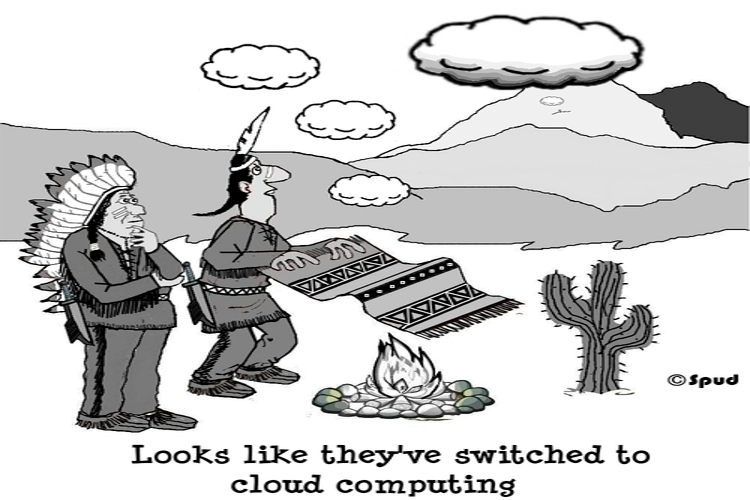We No Longer Say Dead. It’s Uploaded to the Cloud

One Cloud to rule them all.. One Cloud to find them. One Cloud to Sync them all.. and in the IPv6 bind them. ~Cloudius, The Lord of the Things~
In the age of technology, it’s all about rapid changes. 30 years ago, we didn’t have internet. 20 years ago, the fastest internet connection (available for people) was the landline’s (56kbps). 10 years ago, having a fiber internet connection meant selling an organ. But now, we’re enjoying all that is available and for reasonable prices. Now that’s the internet has become a basic need for humans, big techs have come up with an idea.. "What if you don’t need to download and install any program but rather, just open your web browser and start using it as a service?" Such question is what started the ARPANET (The private and original version of the Internet) and it is the same question that created the concept of Cloud Services.
Grab your ticket & your passport, and let’s fly.
What are Cloud Services?
Cloud Services are infrastructure, platforms, or software that are hosted by a third-party provider and made available for users through the internet.
Why Cloud Services?
In simple terms, the future. Cloud Services offer quick access to the needed services for end-user, the ability to access these services from any place, and Disaster Recovery. They also ease the collaboration between teams and reduces the Total Cost of Ownership (TCO).
How Do Cloud Services Work?
Cloud Services rely on hardware and software, just like all IT solutions. However, unlike the traditional hardware-software solutions, users can access the cloud services with nothing more than a computer, operating system, and an internet connection.
What are the Types of Cloud Services?
All infrastructure, platforms, and software that the user access via the internet without the need to download additional software can be considered as cloud services including the following:
1) Infrastructure-as-a-Service (IaaS): to provide the user with compute, networking and storage resources.
2) Platform-as-a-Service (PaaS): to provide the user with a platform that the application can run on. In addition to the IT infrastructure required to run it.
3) Software-as-a-Service (SaaS): to provide the user with a cloud application; the platform on which it runs and the platform’s underlying infrastructure.
4) Function-as-a-Service (FaaS): an event-driven execution model that lets developers build, run, and manage app packages as functions without maintaining the infrastructure.
Cloud Infrastructure
When providing a user with a Cloud Infrastructure, cloud service providers tend to detach computing capabilities from hardware components through virtualization and virtual machines. Once separated, the storage, compute and network components are provided to the user through the IaaS. For example, Data storage availability is separated from datacenters or hard drives. This kind of Cloud Services has led to the rise of Cloud Storages which stores Big Data as a part of the Internet of Things (IoT).
Cloud Platforms
Cloud service providers can also use their hardware resources to create cloud platforms, which are online environments where users can develop code or run applications.
Building a cloud platform requires more than abstracting a computer’s capabilities from its hardware components. Providing a cloud platform requires multiple levels of development to incorporate other technologies like containerization, orchestration, APIs, security, and automation. User experience (UX) is also an important consideration in order to create an easy-to-use platform.
Cloud Software
The final widely accepted cloud service that providers can offer is a full web application, also known as cloud software or SaaS. This requires the highest development investment because the cloud provider is literally offering an online app to customers.
Cloud software can be delivered via a cloud-native approach. This approach is an application architecture combining independent, and loosely coupled microservices. Multiple microservices can be packaged into individual containers managed by a container orchestration engine. The final product is a cloud app that can be optimized by the microservice without impacting other microservices that make up the whole app.
Conclusion
It’s no wonder that Cloud Services have become a competitive advantage. It allows easier access to the needed resources, an easier collaboration between teams and it prevents data loss. Many tech companies are even integrating AI and machine learning into their cloud services which will enhance the service even more. Seems like the future will be on Cloud 9 where everything is cloud-based.

